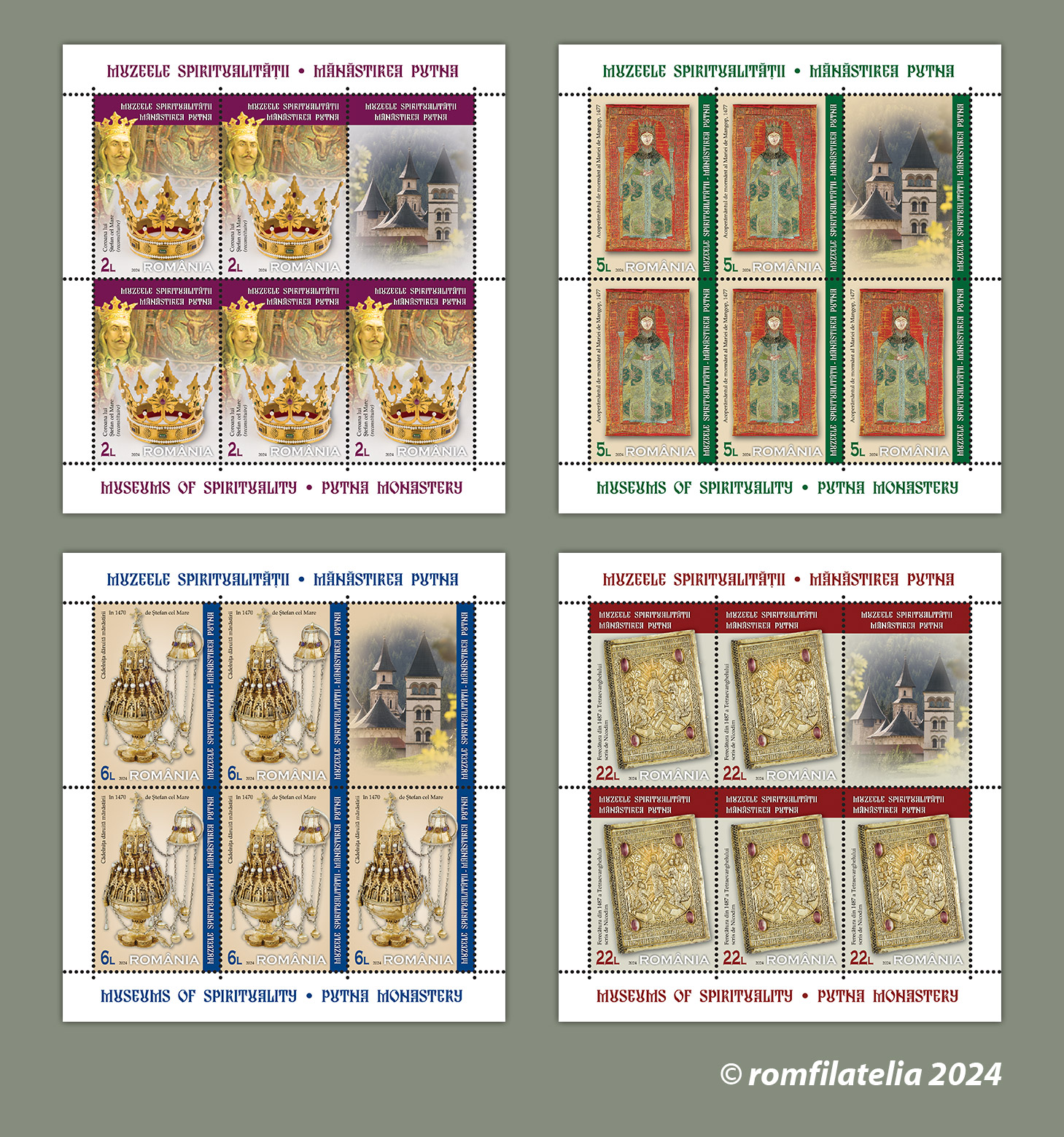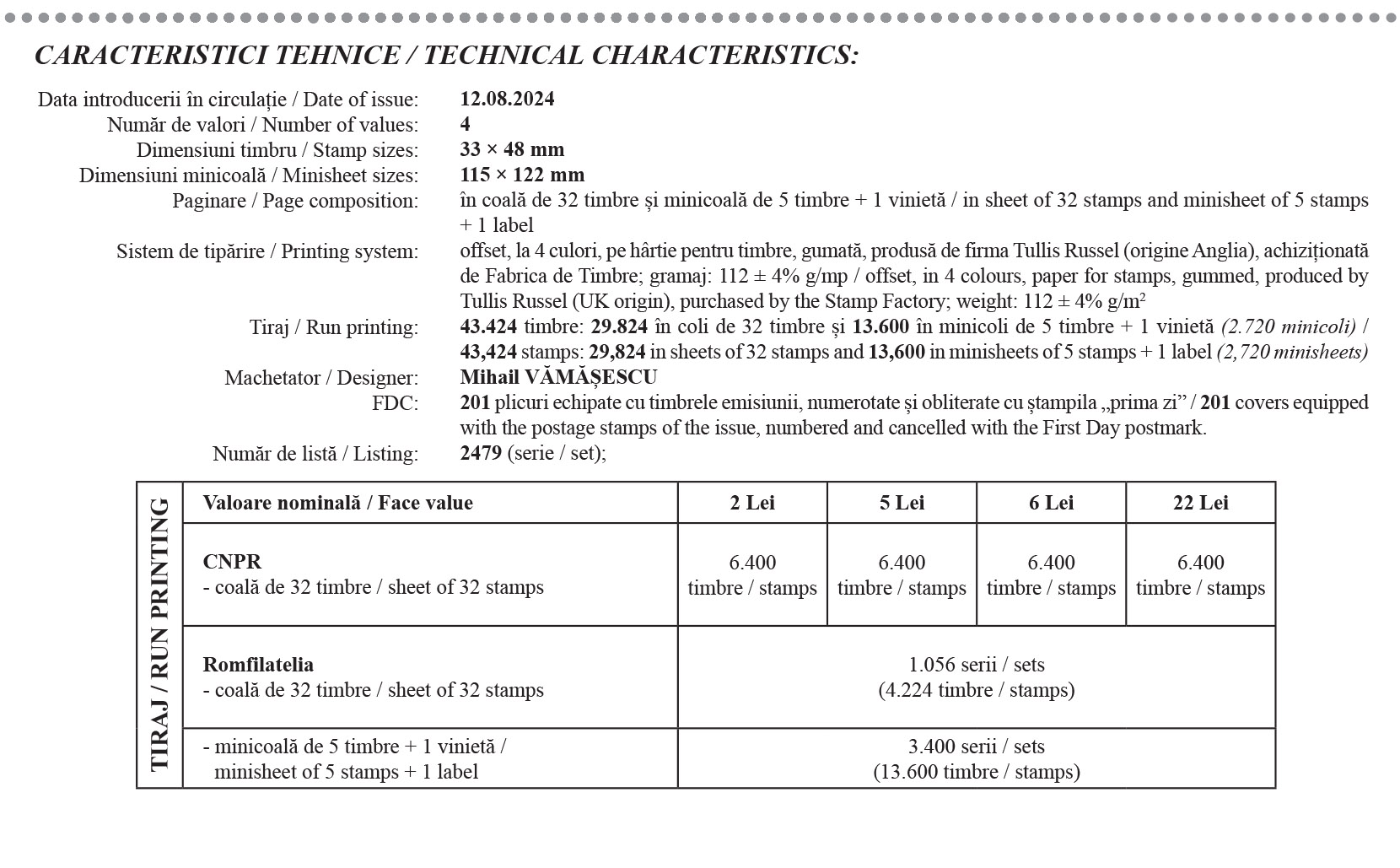 Romfilatelia introduces into circulation on Monday, August 12th this year, a postage stamps issue with the topic of the spiritual treasure of Orthodoxy under the title Museums of Spirituality. Putna Monastery. The issue consists of four postage stamps and a First Day Cover.
Romfilatelia introduces into circulation on Monday, August 12th this year, a postage stamps issue with the topic of the spiritual treasure of Orthodoxy under the title Museums of Spirituality. Putna Monastery. The issue consists of four postage stamps and a First Day Cover.
Putna Monastery, the first foundation and eternal resting place of Voivode Stephen the Great – ‘the defender of Christendom’ – was consecrated on September 3rd, 1469. Known as one of the most visited places of worship of Orthodoxy, Putna Monastery also has one of the richest and more valuable museums of spirituality, preserving many objects from the time of the great voivode including manuscripts, worship objects, embroideries and fabrics, silver works and ceramics.
The Putna Monastery itself, as well as the museum of the Putna Monastery, are more than just tourist attractions. They represent a place where history, art and spirituality come together in an unique and unforgettable experience.
520 years after the passing into eternity of Saint Voivode Stephen the Great, Voivode of Moldavia (1457–1504), the postage stamps issue marks this important commemorative moment in the history and faith of the Romanian nation.
The postage stamps of the issue reproduce in their images four high-value exhibits:
The Crown of Stephen the Great (face value of Lei 2.00), reconstructed after the image from the Tetraevangelion from Humor (1473) and after the votive painting from Voroneț (about 1492), was consecrated by Patriarch Daniel of Romania on August 13th, 2018.
The Tomb cover of Maria of Mangup (1477) (face value of Lei 5.00) is a masterpiece of the Byzantine tradition embroidery in the Romanian Middle Ages, worked with gilded silver thread and silk. It is the oldest life-size embroidered portrait in Romania and the only known piece that brings together all signs of power of the Byzantine Empire.
Maria of Mangup was the second wife of Stephen the Great, related to the royal family of the Palaiologos. Her death, in December 1477, marks the first funeral in the royal necropolis in the Putna Monastery church, where Bogdan (†1479) and Petru (†1480), two minor sons of Stephen the Great, would later follow. In July 1504, Stephen the Great joined his family members to eternal rest. The chronicler says: ‘it was so much sorrow, that everyone was crying, as if for a parent, knowing that they had lost a lot of good and protection. And after his death, to this day, everyone calls him Prince Saint Stephen’.
The Censer given by Stephen the Great on April 12th, 1470 (face value of Lei 6.00) is the oldest piece of silverware of the Putna Monastery, a thanksgiving to God on the 13th year of his reign, in the context of the beginnings of the Putna Monastery. Following a model prevalent in the era, it represents the Heavenly Jerusalem. On the foot of the censer are engraved the coat of arms of Moldavia and, for the first time, the dynastic coat of arms of Stephen the Great. For its symbolic and documentary importance, this censer was exhibited in museums in Paris, Geneva, Stockholm, Gothenburg and London between 1925 and 1971. It weighs over 2.5 kg and it is made of silver-gilt.
The Covering dating from 1487 of the Tetraevangelion written by Nicodim (face value of Lei 22.00), made of silver-gilt and semi-precious stones, adorns the manuscript made by the hieromonk Nicodim in Putna, in 1473, for the Humor Monastery. In this manuscript, the votive scene includes the miniature portrait of Saint Stephen the Great, considered the closest to the voivode’s real face. Presented in the posture of a humble donor, on his knees, Stephen the Great offers Jesus Christ and the Virgin Mary the very Tetraevangelion. On the front cover of the covering is represented the icon of the Resurrection of Christ, which brings out Adam and Eve from the depths of hell, and on the back cover is depicted the Dormition of the Mother of God.
In its image, the First Day Cover reproduces the votive scene from the Tetraevangelion of 1473.
Romfilatelia thanks His Eminence Calinic, Archbishop of Suceava and Rădăuți, for the blessing given and the representatives of the Putna Monastery for the documentary and photographic support given to the development of this postage stamps issue.



